Mexico’s drug war, which official statistics say has claimed 34,000 lives in the past several years, still is not widely covered in the media. Journalists have been focusing more on Central America, where drug cartels are involved in a struggle for channels they used to smuggle cocaine, heroin and other drugs to the United States. Keeping channels they already have in Mexico and Colombia, drug dealers are strengthening their positions in Guatemala, Salvador, Honduras and Panama.
Los Zetas Cartel, which is believed to be the largest criminal organization in Mexico, is always in the news. According to the Drug Enforcement Administration (DEA), this cartel can afford all kinds of drug smuggling operations. Los Zetas can be described as Al-Qaeda of illegal drug trade. The Zetas are blamed on the growing drug threat in the U.S. The cartel is a kind of a red herring for the U.S. special forces to hide a multibillion-dollar drug business they control, which is not only about cocaine and heroin but also synthetic drugs.
In 2003-2004 Fernando Mendizabal, who was Guatemala’s lead prosecutor for drug-related crimes warned against any interference with modus operandi of local drug traffickers would lead to an outbreak of violence inside drug cartels. There were five drug cartels in Mexico at the time led by Mendoza, Chamale, Lorenzana, Sersenio and Luciano. They signed a kind of a peace agreement and decided on influence zones and channels to smuggle drugs from Mexico to the U.S. They avoided using force against each other`s gangs, moreover- they even helped each other financially and did not forget about charity, as if they were playing the Robin Hood game.
Everything changed after the arrest of the Guatemalan drug boss Otto Herrera, also known as “El Pipa”, “El Ingeniero” and “El Profe”. He used to control the departments of Izabal, Peten and Coban in Guatemala. After the arrest of Herrera and some other drug lords gangs started fighting against each other and with heads of Mexican cartels- El Sinaloa, El Golfo, Los Zetas. The latter carried out a new massacre leaving 27 beheaded bodies on the Guatemala-Mexico border. That was a typical Mexican-style attack to intimidate rivals. Before that Los Zetas killed 70 Guatemala migrants in Mexico after they had refused to cooperate with drug bosses.
Experts in Latin America believe that drug wars on the Mexico-U.S. border are being initiated by agents of the DEA, CIA and FBI. Huge sums are spent to provide financial and even military assistance to drug lords in Guatemala, Honduras: they are said to have been receiving arms, including grenade launchers and mines.Drug cartels are better armed than law enforcement forces and the army… In 2006 the Bush administration hawks launched a large-scale anti-drug campaign in Mexico, while his successor – Barack Obama – ordered to switch focus to Central America and destroy drug cartels on the US border.
Meanwhile, the operation has been quite successful. Los Zetas have weakened their grip of channels leading to North America and focused on central regions, fighting with local gangs which cannot but be a matter of deep concern for the governments. The authorities ask Washington for help in this unequal fight drug bosses who seemed to have already bribed almost all kinds of state-run institutions.
The US is glad to help. And thus its influence on Central America is growing. If you look at the list of so-called ‘US diplomatic envoys’ to Guatemala, you`ll understand easily that the number of officials who deal with purely diplomatic matters hardly more than several people, while those described as consuls and representatives for departments of culture and economy are actually unspoken members of a ‘special center’ for Guatemala rule. The DEA agents also have plenty of delicate issues to deal with. They are responsible for recruiting Guatemalan officers. Volunteers of the Peace Corps (a CIA branch) as well as the US Agency for International Development (USAID) are looking for young people who could join pro-American non-governmental organizations. The US Geological Survey agency (USGS) is also involved in the operation, which is supervised by U.S. Ambassador to Guatemala Stephen McFarland, an experience intelligence officer himself, and his deputy- Todd Robinson, also a long-time CIA agent who had previously worked in Colombia, Salvador, Bolivia, the Dominican Republic and Albania.
When it turned out that Los Zetas controlled up to 70% pf Guatemala, the country’s President Alvaro Colom announced a state of emergency in northern department of Alta-Verapaz and dispatched the army to the area at the end of 2010. The US forces practically led the whole operation against the Mexican drug cartel. A week later, the Zetas forced radio presenters in Coban to deliver the cartel`s message to Colom. It said that Los Zetas gave Colom’s political party $11 million to fund his election campaign. They also threatened a full scale insurgency unless Colom failed to keep his word.
Opinions differ about who was the real author of the message addressed to President Colom. Some say the opposition stands behind, while others believe it was initiated by the CIA. It took Alvaro Colom much effort to save his reputation following the incident. The Guatemalan leader prefers to have friendly relations with the US and seems to have lost interest in cooperation with neighboring Cuba and Venezuela.
Drug-related allegations addressed to any Latin American politician are fraught with grave consequences for his career. Especially if charges are announced by the U.S. Many Latin American politicians as well as members of their families are prone to blackmail. If Washington decides to oust a politician from the region`s political scene, it will always succeed.
Fortunately, the US is not omnipotent. Nicaragua`s leader Daniel Ortega has long become an independent politician who relies more on partnership with Venezuela and the Bolivarian Alliance for the Peoples of Our America (ALBA). The US Ambassador to Nicaragua Robert Callahan had been trying hard to oust Ortega amid allegations of his poor handling of anti-drug campaigns. But all his efforts were in vain, and the US State Department replaced Callahan to avoid his exile from Managua. Meanwhile, Ortega enjoys high chances the November 2011 presidential elections.
Now the problem of drug-trafficking to US via Mexico and Central America is handled by the UN Commission on Narcotic Drugs (CND). Up to 90% of cocaine comes to US from Colombia and Peru. The US receives at least 20 tons of cocaine via Guatemala annually. The CND has to investigate how such active drug smuggling remains possible after Washington has launched several anti-drug programs on the border.
In June Salvador is scheduled to host a regional conference on drug-trafficking and organized crime, financial assistance surely to be high on the agenda. The question is how much the US is ready to spend on the anti-drug campaign in Central America and whether Washington is really interested in approving a road map for regional narcotic drugs security based on a tough crackdown on drug lords.
Questions remain unanswered even after Mr. Obama`s visit to San Salvador in late March. He gave many promises but no details on what has really been done to win the war on drugs. So it is obvious that the war on drug cartels will take a new turn.
Source: Strategic Culture Foundation
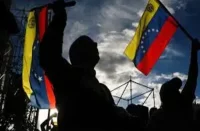
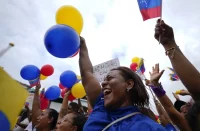
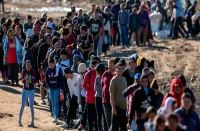



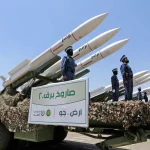
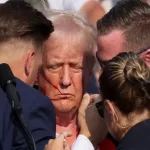
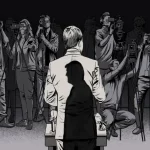





Um, the Peace Corps is not a branch of the CIA and never has been. Your facts on that matter are incorrect.
Good statement, Mandy :) Maybe ‘branch’ is not a perfect term to describe a long and fruitful relations between Langley and a US foreign service agency ideally corresponding for realization of ‘delicate’ missions.
Here are several citations on the matter:
Writing in 1974, the North American Congress on Latin America notes that:
“The Peace Corps is a perfect structure for the CIA. It provides a point of contact with the working class which is so necessary for information gathering. And, because of the Peace Corps structure, the CIA does not have to control it in order to use it successfully. The Peace Corps entered Latin America as the “person-to-person” of the Alliance for Progress. Working out of the U.S. Embassy in Santiago, the first head of the Peace Corps in Chile was Nathaniel Davis, promoted to Ambassador by the time of the September 1973 coup. Under the skillful guidance of Davis, many of the youthful volunteers headed straight for the poblaciones which housed the poorest sectors of the Chilean working class and unemployed. Fresh out of Swarthmore, Bennington and Berkeley, the volunteers invaded the poblaciones, lived with the people and came to know them — politically and socially. They worked with them, observed their customs, their way of life, their traditions. And then they drew up work reports describing their experiences.
“It was not necessary to have many agents in the Peace Corps — just in the right places and with access to all the information which was generated. Unknowingly, thousands of U.S. youths, most thinking that they were helping the Chileans, were instead gathering data for the now undercover Project Camelot.
“Those agents in the Peace Corps who were conscious of their role had several tasks. As they mingled with the people, they were identifying future leftist leaders as well as those right-wingers who in the future would work for U.S. interests. They were assessing consciousness, evaluating reactions to reforms. And they were selecting and training future agents. It was at this point that Michael Townley, Peace Corpsman in the sixties, was recruited to enter the Agency. Townley returned to Chile in 1970 as one of the agency’s closest contacts with Patria y Libertad.
“Finally, the Peace Corps was used as a front to get paramilitary equipment into the country. Ellis Carrasco, who succeeded Davis as head of the Peace Corps, was himself accused of gun-running. Later, the U.S. Army donated and installed radio receivers in all Peace Corps regional offices to facilitate communications. These same receivers were used during the coup to facilitate coordination of the Junta’s bloody activities.”
In 1996, CNN reported that:
“Sen. Paul Coverdell, R-Georgia, who was director of the Peace Corps during the Bush administration, urged the committee to ban intelligence recruitment of Peace Corps volunteers.
“”It would be, in my judgment, exceedingly dangerous for our volunteers to be included in a context in which they may be representatives of the CIA,” Coverdell said.
“Several senior senators think the CIA should have the right to recruit outsiders when there’s an extraordinary threat.”
The declarations by Sen Paul Coverdell mean:
1. The CIA used to recruit Peace Corps volunteers.
2. It was so evident that the image of PC have been notably damaged by 1996.
3. This public statement is made only and exclusively as an attempt to restore the image of PC but does not guarantees that such cooperation was not the case afterwards. By the way, Sen.Coverdell died 4 years later…
Pingback: The Caravan Crisis 2.0 Shows That Central America Needs The US’ Support | OrientalReview.org – DE LA GRANDE VADROUILLE A LA LONGUE MARGE